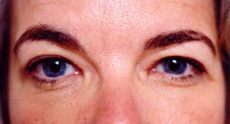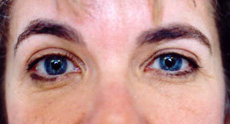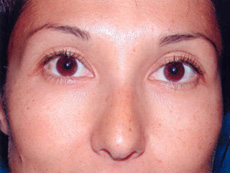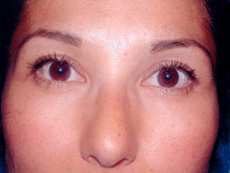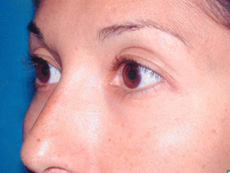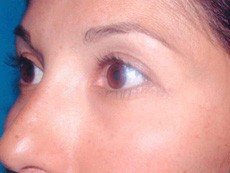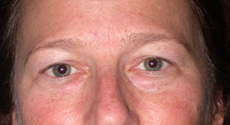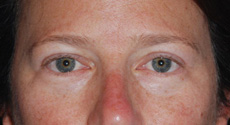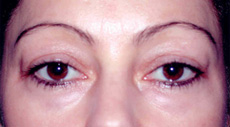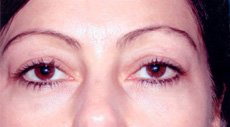Facial Rejuvenation
Blepharoplasty
A blepharoplasty, or eyelid lift, is designed to remove the excess skin and bagginess in the upper or lower lid which occurs with aging. A brighter look around the eyes results. As we age, the skin of the eyelids looses elasticity and may become redundant, saggy, and wrinkly. Bags become evident in the eyelid area as the structures beneath the skin also become lax, allowing the natural fat around the globe to protrude and form bulges. The skin under the eyelid and in the cheek descends and thins with age, unmasking bony dark circles, further contributing to the overall look of tiredness. Often it is these changes in our faces that we first notice, and so blepharoplasty is one of the most frequent initial plastic surgery procedures that patients inquire about. An upper lid blepharoplasty (or upper eyelid lift) and/or a lower lid blepharoplasty (or lower eyelid lift) corrects these problems by tightening the redundant skin in the area and by removing the protruding fat pads. (Figures 1 and 2)
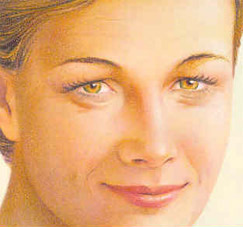
Figure 1
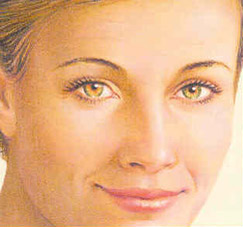
Figure 2
Dr. Chang favors a judicious removal of eyelid skin so as not to change the overall shape of the eye. She also favors a careful fat excision, and in some patients, particularly in the upper eyelid area, no fat may need to be removed at all. As we age, although the fat pads themselves protrude, with time, the overall eye area looses fat and can appear more sunken. By removing only what fat is absolutely necessary, the eye area can retain a youthful, natural look longer.
Upper eyelid blepharoplasty is performed through an incision that is hidden in the natural fold of the upper eyelid. This incision extends slightly beyond the outside corner of the eye into the natural crow’s feet or laugh lines in the area. The skin in the eyelid area heals remarkably well, and these incisions are virtually imperceptible when mature. Through this upper eyelid incision skin, muscle, and fat can be removed in order to achieve the desired contour. (Figure 3) In some patients, some of the droopiness in the upper eyelid area is due to the fact that the brow is also dropping. In these cases, a browlift may need to be performed in order to achieve the best aesthetic results. During your consultation, Dr. Chang will help you determine the best combination of procedures to achieve your goals.
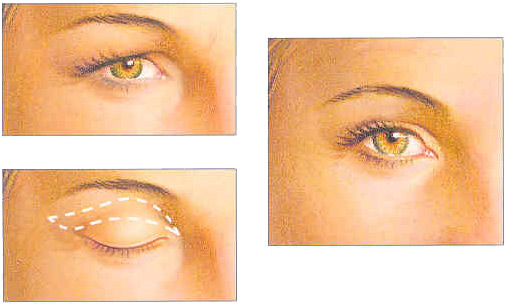
Figure 3
Lower lid blepharoplasty is performed through an incision that is hidden just below the lower lashes, in the same area where one would place eyeliner. Through this incision excess skin, muscle, and fat are removed in order to smoothe the lower eyelid area. Sometimes, the fat may not be removed, but redistributed instead to camouflage depressed areas around the lower eyelid. (Figure 4)
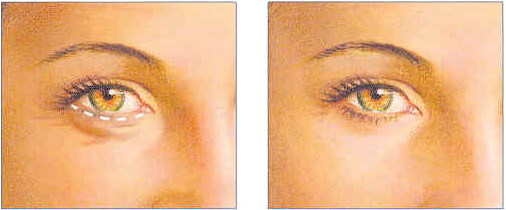
Figure 4
In some cases, particularly in the younger patient with less redundant skin, it may be desirable to remove only the excess fat bags. This more minimally invasive technique is called the transconjuctival lower lid blepharoplasty. It is performed through an incision placed on the inside of the lower lid. Because there is no external incision, all of the incisions are hidden. It may not be appropriate for some patients because excess skin cannot be removed. Dr. Chang will advise you as to your best options during your consultation.
Dr. Chang performs her blepharoplasties in the hospital or in an office setting. Local anesthesia and intravenous sedation are used for patients undergoing eyelid surgery, although general anesthesia may be desirable in some instances. Patients are permitted to go home the same day after surgery with supervision. Recovery is surprisingly quick and with very little discomfort.
Dr. Chang recommends taking approximately 5-7 days off work, depending upon the amount of surgery that is performed. The amount of initial recovery time will vary slightly among each individual and according to exactly what is done. In general, the majority of the initial swelling and bruising will be resolved in the first week, and most people feel comfortable interacting with others and engaging in their normal activities, particularly with a little makeup. The eyelids tend to improve more and more in appearance over the next several months as the swelling completely resolves. They look their very best at 3-6 months. Scars can take up to 6 months to a year to fully mature. However, because the eyelid skin heals so quickly, most eyelid scars are almost imperceptible after only a few weeks. Dr. Chang recommends no strenuous activities, exercise, or heavy lifting for 2-3 weeks after surgery, after which time there are no restrictions.
Complications can occur, as with any surgical procedure. Luckily, these are rare occurrences and the vast majority of blepharoplasty patients heal quickly and smoothly. Complications that can occur include dry or teary eyes, visual acuity changes, lid malpositions, bleeding, infections, and unfavorable scarring. Most of these conditions resolve on their own or require only minor revisions to correct.
After undergoing blepharoplasty, patients notice a brighter, firmer, and smoother appearance to the lid area. Most patients report that their eyes feel less tired, and some even report an improvement in their vision. Blepharoplasty provides extremely satisfying, beautiful results with a relatively short recovery, and is thus a cosmetic procedure that results in many happy patients.
Upper lid blepharoplasty
Upper lid blepharoplasty
Upper lid blepharoplasty
Upper and lower lid blepharoplasties
Transconjunctival lower lid blepharoplasty
This gallery represents only a small selection of photos available for viewing. Additional before/after results are available at the time of your appointment.
Before and After Photos – individual results may vary
